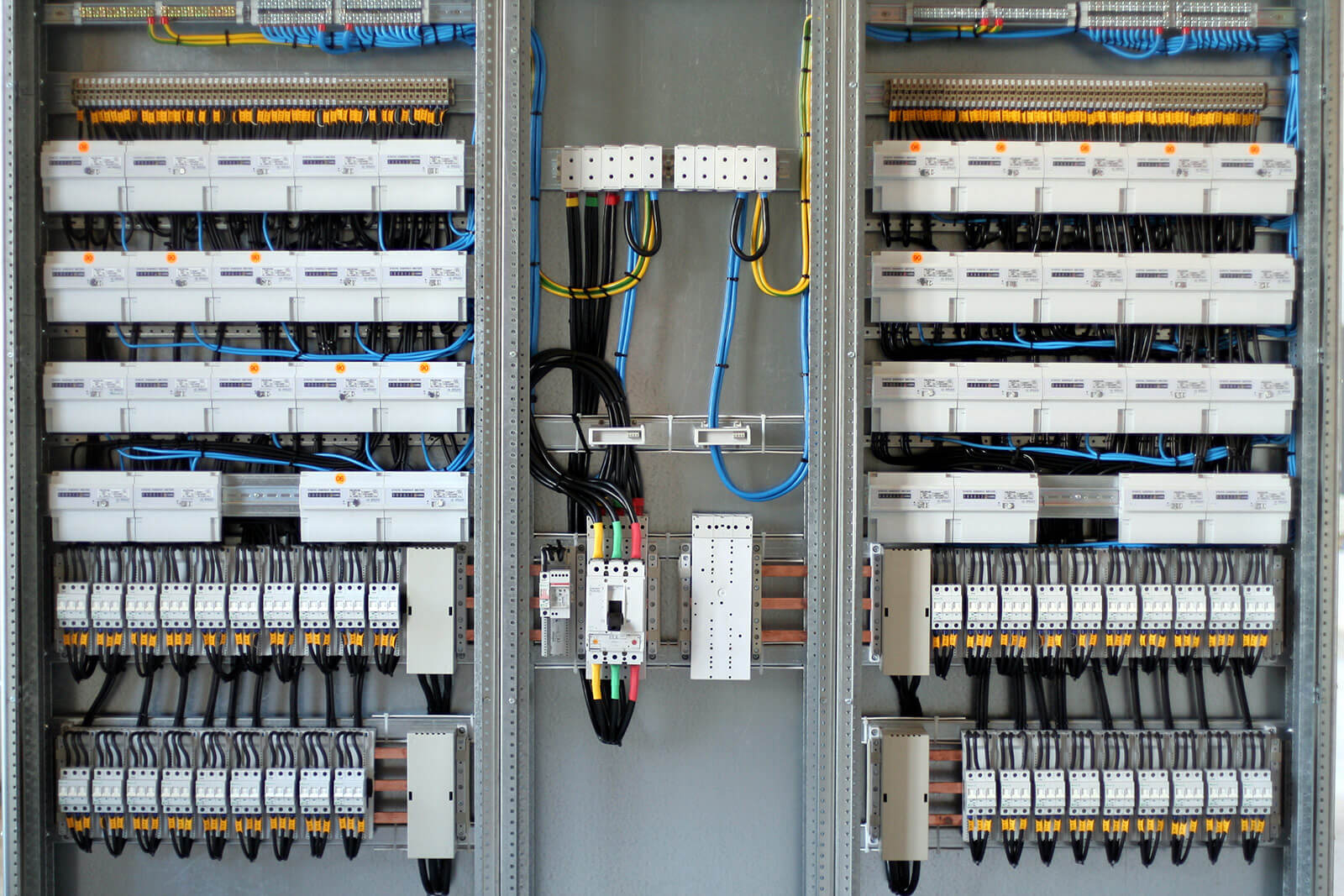The electrical safety of patients in healthcare centres is a matter of absolute priority, both to avoid problems with electrical current that could harm the health of patients and the operation of the healthcare centre and medical staff.
In this article we will look at some of the crucial elements in ensuring the electrical safety of the patient, such as the standards, the type of electrical system and its elements, and what to do to eliminate and deal with the dangers and risks that exist.

Electrical safety of a patient: what it consists of and its importance
Hospital electrical safety can be defined as the group of preventive actions we take to minimise or eliminate the risk of accidents to patients, medical equipment and infrastructure, and healthcare personnel.
The vast majority of medical devices are electronic and are powered by power supplies and the mains. Therefore, if an electrical safety failure occurs, the risk of patient injury is high.
Thus, patient safety comes first, and under this premise it is essential to be informed, to plan and to work taking care of the patients’ lives, safe from any risk factor.
The number 1 objective of a critical area in a hospital is to assist in the safety and preservation of the lives of both medical staff and patients. Especially in invasive procedures, such as those that pierce the skin, the patient and medical staff are susceptible to electrocution and possible death caused by a leakage current or failure of medical equipment.
“The number 1 objective of a critical area in a hospital is to assist in the safety and preservation of the lives of both medical staff and patients.”

The main problem of patient electrical safety
The major issue for the patient and the healthcare environment is to ensure electrical safety in the various areas of medical use in order to:
- Limiting leakage currents, from the point of view of connectivity between patient and instrument.
- Avoiding unnecessary power interruptions by ensuring continuity of power supply, from the point of view of the patient’s dependence on the instrument and the patient’s state of consciousness.
Basic considerations on electrical safety of the patient
- Human skin has a resistance of between 15k-Ohm and 1 m-Ohm, while under the skin the resistivity drops dramatically to levels between 100 ohm and 200 ohm. Any procedure that reduces or eliminates skin resistance makes the patient an electrically susceptible subject (invasive procedure). Thus, in the absence of skin protection, an electric shock can more easily circulate to the ground, and cardiac defibrillation can occur with a current of less than 10 mA.
- When assessing the electrical system, the power of the isolation transformer of the isolated power system must be assessed, which should be between 0.5 KVA to 10 KVA.
- The insulation monitor should generate an alarm when the insulation resistance between phase and ground is less than 50 kΩ.
- Every hospital unit must have an ground fault circuit breaker in its electrical system, as this is what protects people against electrocution in wet areas. Electrical equipment must not be fixed less than 1.53m above the floor.
- To protect patients, fixed electrical equipment and all sockets must be connected to the isolation system.
- Power outlets supplying general or critical patient areas should be designed to be able to supply the maximum number of equipment to be operated simultaneously.

The design of an electrical safety programme
Another key element is undoubtedly the design and implementation of an electrical safety programme, which from the outset will educate and train healthcare staff, ensure the correct design of hospital electrical installations and ensure optimal maintenance of all electro-medical equipment.
Thanks to this programme, we will be able to classify patient procedures according to the type of contact between the patient and the medical equipment (high risk – cardiac, medium risk – with the body, low risk – casual contact), at the same time as we can:
- Create a control and monitoring of electrical inspection of medical equipment.
- Design a complementary preventive maintenance programme in accordance with the manufacturer’s recommendations.
- Avoid the use of extension cords or wall adapters in patient care areas.
The importance of the electrical IT scheme
To avoid the undesirable effects of electric current, especially in situations where the patient is defenceless and particularly exposed, the IT scheme for medical use is essential.
Logically, an anaesthetised, sedated or incapacitated patient cannot react to electrical contact. And if we add to this the fact that the contact is invasive, the effects are even more serious.
In view of this fact, electrical installations in operating theatres, Intensive Care Unit rooms, etc. require a special type of electrical installation known as an IT scheme for medical use.
This is an installation in which the electrical network is isolated from the ground. This means that if a patient comes into contact with an electrical conductor, the current will not flow through it as the circuit is not closed by the ground of the installation. To achieve this we install an isolation transformer, and the consequent isolation detector to permanently supervise ground leakage, and when this occurs, it alerts us that we are in a dangerous situation.

Guide to know the state of the electrical system of a hospital unit
Within patient safety, a key element is to know at first hand, with all the information verified and updated, the state of the electrical system of a hospital unit, whether it is a room, operating theatre, post-operative room… These are contexts with high risks of electrical failures when they do not have an adequate electrical safety system.
The fundamental idea is that all electrical installations in hospitals require constant supervision. This is what will guarantee that it continues to work properly, without unforeseen events or external failures that could affect the installation and whose consequences could affect human life.
At ETKHO we offer our consultancy and diagnosis services, carrying out a complete assessment, taking into account all the details that may influence future failures. Through this diagnosis, we will find out how the system is working, if there are incidents that cannot be detected with the naked eye, etc.
In this sense, some of the elements that every hospital must guarantee with regard to the state of the electrical installations are:
- Carry out commissioning, operation and maintenance tests.
- To have the installation of an alternate source of electrical power supply for electrical protections that guarantee the continuity of services.
- To have an automatic transfer system with a mains switch switch.
- Install a UPS or uninterruptible power supply system for critical areas to ensure continuity of service in the event of power outages.
- An isolated power or grounding system in critical areas to protect patient life in the event of a power failure.
“The fundamental idea is that all electrical installations in hospitals require constant supervision. This is what will guarantee that it continues to work properly, without unforeseen events or external failures that could affect the installation and whose consequences could affect human life.”

Electrical safety standards in hospitals
Electrical safety standards are the procedures and standards for the prevention and reduction of risks to patients, electrical installations, human equipment and the environment.
Currently, the main organisations setting global standards for hospital electrical safety are the International Organization for Standardization (ISO) and the International Electrotechnical Commission (IEC). However, each country usually has its own regulations.
As far as international standards are concerned, the most important are:
- IEC 60601 AAMI / NFPA99: Standard for medical equipment.
- NFPA 110 Standard for emergency and standby power systems: Performance level requirements for emergency and standby power systems.
- IEEE – Electric systems in healthcare facilities: Practical recommendations on the design and operation of electrical systems for healthcare facilities.
The need to comply with standards
As hospitals carry out activities that rely on electrical medical equipment on a daily basis, there are certain risks to people as well as to the building infrastructure itself. Therefore, complying with the standards avoids exposing patients to potential risks and electrical events that can cause burns, complicate their medical situation or even lead to death in the most severe cases.
In addition, the patient’s treatment, effectiveness and recovery can be put at risk in the event of a power failure.
As we can see, in order to assess and improve the hospital electrical system, it is advisable and necessary to hire experts for advice, diagnosis and solutions.



